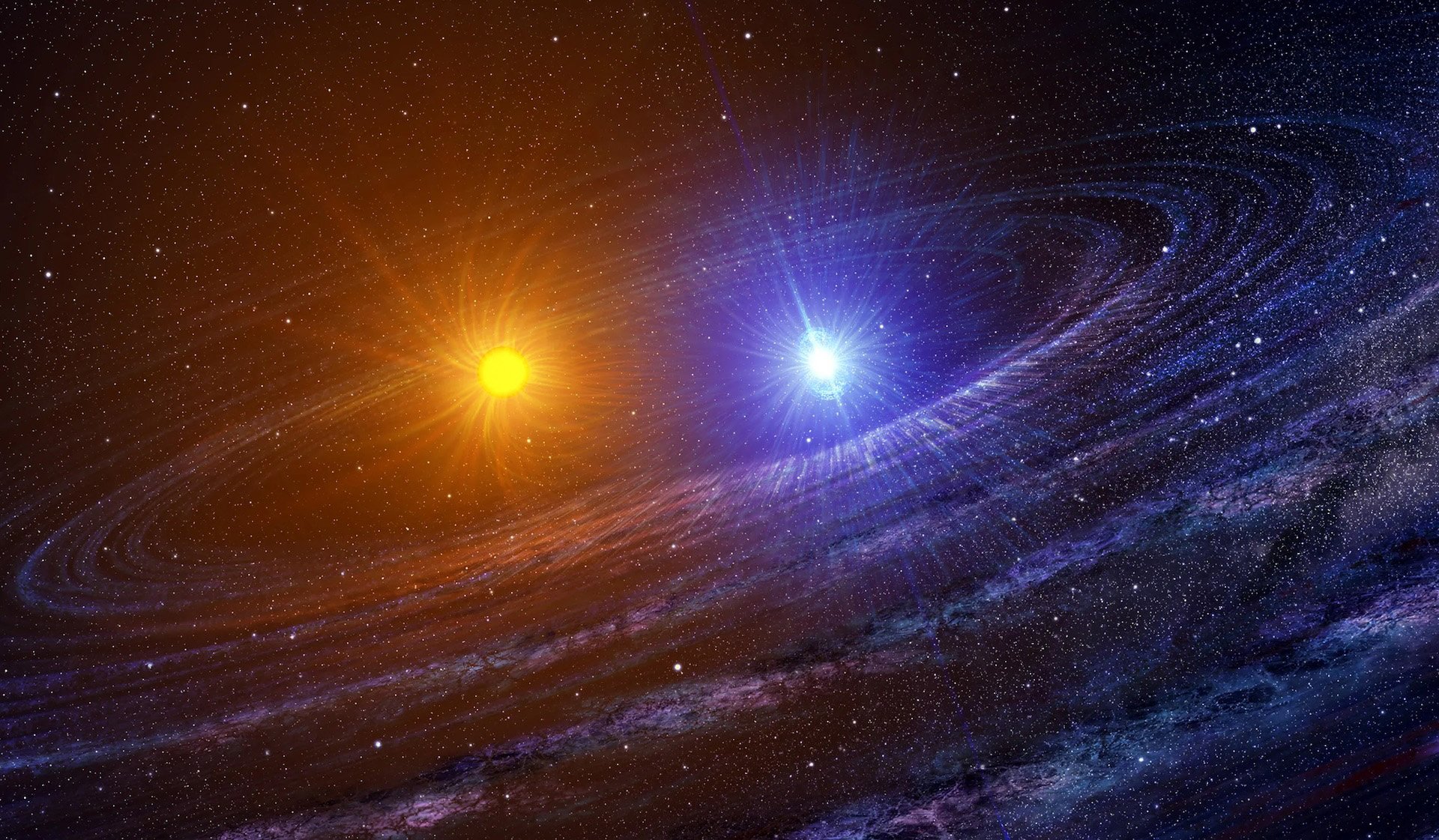Artistic image of a binary system of a red giant star and a younger companion that can merge to produce a blue supergiant. Credit: Casey Reed, NASA
B-type blue supergiants are highly luminous, massive stars that defy traditional expectations by frequently appearing despite their theoretically brief evolutionary phase. Recent research provides new insights, showing that many blue supergiants likely form from the merger of massive binary systems. These mergers explain the stars’ presence in the ‘evolutionary gap’ and their unique surface properties, suggesting a major revision in understanding their life cycle and impact on galaxy formation.
B-type blue supergiants are exceptionally luminous and hot stars, boasting luminosities at least 10,000 times that of the Sun and temperatures 2 to 5 times higher. With masses ranging from 16 to 40 times that of the Sun, these stars are believed to exist during a brief and rapid phase of stellar evolution, making them theoretically rare. So, why do we observe so many of them?
An important clue to their origin lies in the fact that most blue supergiants are observed to be single, that is, they have no detectable gravitationally bound companion. However, most young massive stars are observed to be born in binary systems with companions. Why are blue supergiants single? The answer: massive binary stellar systems ‘merge’ and produce blue supergiants.
In a pioneering study led by IAC researcher Athira Menon, an international team of computational and observational astrophysicists simulated detailed models of stellar mergers and analyzed a sample of 59 early B-type blue supergiants in the Large Magellanic Cloud, a satellite galaxy of the DOI: 10.3847/2041-8213/ad2074





















Discussion about this post